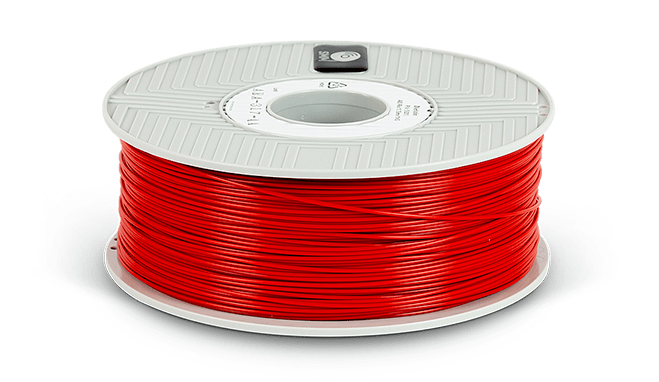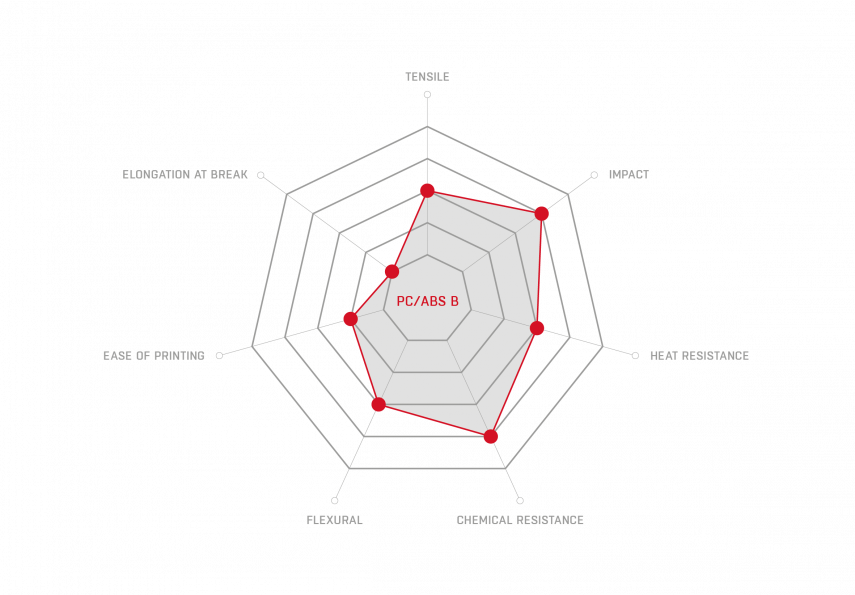PC-ABS
PC-ABS filament is an acrylonitrile butadiene styrene and polycarbonate copolymer and it combines the features of both polymers.
PC-ABS filament is an acrylonitrile butadiene styrene and polycarbonate copolymer and it combines the features of both polymers.

Thanks to unique features of PC-ABS is suitable to print the models that work in wide temperature range applications. The heatbed should be used in order to control the cooling down process.
PC-ABS filament is a 3D printing material of increased impact strength (comparable with PC), increased heat resistance and decrease moisture absorption. PC-ABS filament is a V-0 flame retardant blend of Polycarbonate and ABS – two of the most used thermoplastics for engineering & electrical applications. The combination of these two materials results in a premium material with a mix of the excellent mechanical properties of PC and the comparably low printing temperature of ABS. Main benefits: stronglayer adhesion, high print speeds possible, easy to print.

Filament AM Forward Ultrafuse® PC/ABS FR
Flame retardant PC-ABS combines the benefits of polycarbonate (PC) and acrylonitrile butadiene styrene (ABS). This blend makes this filament a strong, durable polymer – a desirable material for additive manufacturing in many industrial sectors.
Above all, the polymer is flame retardant, which means it meets fire safety standards, thus it can be applied in the most demanding sectors, e.g., the railway industry.

Controlled humidity for loaded materials – regardless of the printers operational status. Most of the engineering and high-performance polymers have to be dried before use. 3DGence INDUSTRY F340 will do it for you. The materials are always pre-warmed and dry. peek
Controlled humidity for loaded materials – regardless of the printers operational status. Most of the engineering and high-performance polymers have to be dried before use. 3DGence INDUSTRY F340 will do it for you. The materials are always pre-warmed and dry.
We will help you to choose the right material
Necessary cookies are absolutely essential for the website to function properly. This category only includes cookies that ensures basic functionalities and security features of the website. These cookies do not store any personal information.
Cookies that are used to recognise you and remember your preferences or settings when you return to our site, so that we can provide you with a more personalised experience.
Cookies which measure how often you visit our sites and how you use them. We use this information to get a better sense of how our users engage with our journalism and to improve our sites and apps, so that users have a better experience.
Cookies that are used to collect information about your visit to our site, the content you have viewed, the links you have followed and information about your browser, device and your IP address.